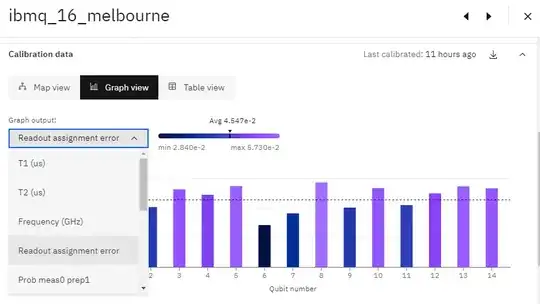On the IBM Quantum Composer website, there are characteristics of qubit computers. For example, ibmq_16_melbourne. But there is no description anywhere of what:
T1(us),
T2(us),
Frequency (GHz),
Readout assignment error,
Prob meas0 prep1,
Prob meas1 prep0,
Readout length (ns),
ID error,
√x (sx) error,
Single-qubit Pauli-X error,
CNOT error,
Gate time (ns) means.
Could you write down what they mean?
And why isn't there, for example, a Pauli-Z error, even though there is a Pauli-X error?
